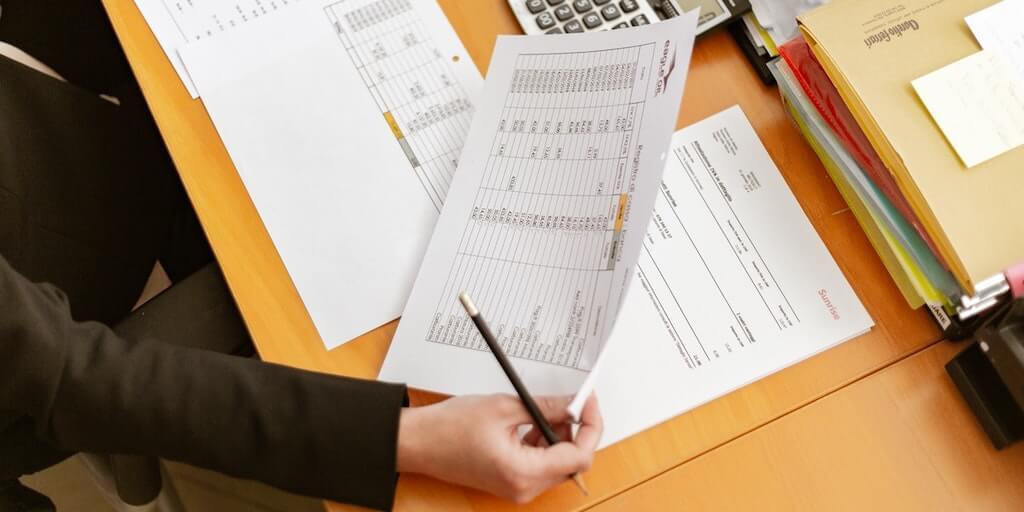What is a Pay Stub?
Learn more about what a pay stub is and how to make one.
Updated on March 31st, 2020
The SMB Guide is reader-supported. When you buy through links on our site, we may earn an affiliate commission. Learn more
A pay stub is a notice, often attached to a pay check, that details how many hours an employee has worked, how much they've earned, and the amount of taxes that have been paid for a specific pay period. It is also known as a paycheck stub, paystub, and pay slip.
Pay stubs allow employers to pay employees correctly, maintain accurate records, and manage federal and state taxes. Pay stubs help employees to understand their taxes and contributions, and ensure that they have been paid the correct amount. It also serves as proof of income.
Since the advent of payroll software, most pay slips are automated and issued to employees online.
How to Fill Out a Pay Stub:
1. Calculate gross pay.
Gross pay refers to money owed to employees before deductions are made, and depends on whether an employee is paid hourly or monthly.
To calculate gross pay for hourly workers, multiply the hourly rate by the number of hours worked e.g. $11.70 x 40.00. To calculate the gross pay for an employee's monthly salary, divide the annual salary by the number of pay periods in a year e.g. $22,900.00 ÷ 12.
The first column of the pay stub shows the current gross pay, while the second column shows the year-to-date totals.
Hours worked:
Pay stubs can include the number of hours worked for both hourly and salary workers. In the case of additional hours worked, the number of regular hours, overtime, and double-time should be detailed separately.
Pay rate:
Note the hourly pay rate for hourly employees. For salaried employees, note the amount of pay due for the specific pay period. You should also note the increased pay rate if the employee has worked overtime or double-time.
Gross pay:
Gross pay should include regular wages, overtime, sick pay, holiday pay, bonuses, and payroll advances. In the two columns, list each form of income on a separate line.
2. Calculate taxes, deductions, and contributions.
On a pay stub, taxes and other deductions are itemized so that employees can see how much money has been taken off their earnings or gross pay. Taxes and deductions are also separated into two columns - current deductions and year-to-date totals.
Employee tax deductions:
These may include federal income tax, FICA tax, and state/local income taxes (depending on the state). List each tax on a separate line and show the amounts deducted for the current pay period and year-to-date.
Other payroll deductions:
This may include employee benefits and contributions such as insurance premiums and other voluntary deductions. List each deduction on its own line, and show current and year-to-date totals.
Employer contributions:
This reflects the amount contributed by the employer to certain taxes and employee benefits, such as insurance premiums and healthcare. List each contribution on a separate line.
3. Calculate net pay.
Net pay is the final amount after all deductions have been made from the gross pay. This is known as the employee's take-home pay. The net pay is the final amount on an employee's paycheck which is deposited directly into their bank account. The pay stub should also show current net pay for the pay period and the year-to-date total.
How Do You Calculate Payroll?
Learn how to calculate payroll for your business. Includes information about calculating hours, wages, and deductions, as well as frequently asked questions.
Oct 1, 2021
FAQs:
How do you get your pay stub?
A pay stub can be issued to an employee in two ways; by giving them a paper document or emailing it to them.
What is shown on a pay stub?
- Employee details, including name, social security number, and address.
- Date and pay period.
- Employee pay rate.
- Hours worked.
- Gross pay (earnings before taxes, contributions, and deductions).
- Taxes withheld.
- Employee contributions.
- Deductions (health insurance, pension, etc).
- Net pay.
Is a pay stub the same as a paycheck?
Yes. When employees obtain their paychecks from employers, the pay stub is what details the information of their pay.
Does your job have to give you a pay stub?
Federal law does not require pay stubs for workers. However, the Fair Labor Standards Act requires employers to keep detailed records of employees' wages and hours worked. In addition, your state might not require employer-issued pay stubs, but an employee has the right to ask for their payroll records.
Can I make my own pay stub?
Yes, you can make your own pay stub using free and paid software. We recommend Shopify's free online pay stub maker.
Are pay stub generators legal?
Yes. However, making fake pay stubs is neither the ethical nor the legal response.
How can I make a pay stub for free?
There are many software programs that you can use to create a free pay stub if you do not have payroll software. Check out Shopify, PayStubly, and FormSwift.
What is not deducted on a typical pay stub?
- Federal Unemployment Tax (FUTA).
- State Unemployment Tax Act (SUTA).
- Federal Insurance Contributions Tax Act (FICA).
Employers are required to pay federal and state unemployment taxes, as well as a portion of Social Security and Medicare taxes. The FUTA tax rate for 2019 is 6.00% and the Medicare tax rate is 1.45%.

